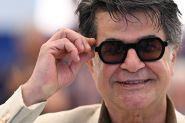After rejecting the harmonic conventions of the past, contemporary music now manifests as a controlled chaos, integrating noise experiments and redefining the boundaries of auditory experience. This article explores three notable works that illustrate this sonic evolution.
Omnipresent in the living world, "selfish genes" are fundamental agents of evolution according to Richard Dawkins' theory. These genes strive to increase their own genetic success by influencing the organism's behavior. They may even eliminate their ancestors or competitors to ensure their survival and transmission. Similarly, this principle of selection, where the son metaphorically kills his father, can be observed in the musical domain. This "Darwinian view," as Frédéric Lagrange puts it, has deliberately led to a schism between Western art music and the tonal harmonic system — the refined and codified musical language in Europe during the 18th and 19th centuries, adopted until the mid-20th century.
Since this divorce, contemporary music has progressively rejected established forms, structures, and aesthetics, leading to a dissolution of century-old musical conventions. Music no longer manifests as a hierarchical structure but as controlled chaos. Noise itself has been integrated into the musical vocabulary, with 20th-century noise experiments undoubtedly paving the way into the post-modern musical arena.
"They didn’t know how to listen," John Cage stated in 1987, accusing listeners of not assimilating his concept of noise in music. Meanwhile, the pursuit of beauty and contribution to collective memory, which once formed the very foundation of tonal music, now seems on the periphery of this new sonic reality. This article will highlight three unusual contemporary works that redefine the concept of musical experience.
Music of Chance
Considering silence as a fundamental and active component of music, and that absolute silence is virtually unattainable, John Cage (1912-1992) conceived an experimental work titled 4'33". Four minutes and thirty-three seconds of silence. A controlled silence, intended to focus the audience's attention on ambient sounds and surrounding noises occurring during the allotted time.
Cage suggests that attentive listening to these unwanted or unexpected noises can be considered a form of music. Indeed, the score of 4'33" is an example of what the American composer called "chance music," an approach influenced by randomness and indeterminacy. Although no official explanation is provided for the title of this experimental piece, it is generally accepted that the 4'33" corresponds to 273 seconds, echoing -273 degrees Celsius, or absolute zero. At this temperature, atoms are theoretically at rest, making any sound production impossible.
This avant-garde work profoundly questions notions of intentionality, formal structure, and sonic perception. It emphasizes the importance of the auditory experience itself as a constitutive element of the musical performance and prompts a reconsideration of the performer’s role as merely facilitating the sound phenomenon rather than being an active creator. “I was afraid that by making a piece that had no sounds in it, it would appear as if I were making a joke. In fact, I worked longer on my ‘silent’ piece than on any other. I worked on it for four years…” John Cage remarked.
https://www.youtube.com/watch?v=JTEFKFiXSx4
Music and Probabilities
Does music and probability mix well? Iannis Xenakis (1922-2001) was firmly convinced of this when he composed Pithoprakta ("actions through probability" in Greek) in 1958, a work for an ensemble of 49 musicians (2 tenor trombones, xylophone - and woodblock -, and 46 string instruments). This composition stands out for its bold use of polyrhythmic structures and orchestral complexity. Xenakis incorporates stochastic composition techniques, where musical events are generated probabilistically.
Each instrument is considered an independent molecule according to the Maxwell-Boltzmann distribution law. The latter describes the range of probable speeds of particles moving in an idealized gas at thermodynamic equilibrium. These ranges vary depending on the gas's temperature and pressure. In Pithoprakta, Xenakis divides the work into distinct sections, each with its own temperature and pressure parameters. He applies this law to determine the speed ranges of 1,148 theoretical particles, representing sound elements, based on the specific conditions of each section. The composer then transcribes this data into musical notation, associating the particle speeds with frequencies.
https://www.youtube.com/watch?v=AE1M2iwjTsM
Minimalist Opera
Einstein on the Beach. You read that correctly; it's not a mistake: it is indeed a work by Philip Glass, now 87 years old. Einstein on the Beach is a four-act opera without a linear story or traditional plot. Instead, it consists of scenes exploring various themes related to the life and science of Albert Einstein. There is no continuous narrative but rather a series of visual and musical tableaus.
The composition is emblematic of Glass's minimalist style, with repetitive patterns, simple harmonic structures, and gradual developments. The music uses rhythmic and melodic cells that repeat and transform over time. "This has been described by some writers as sounding like wheels inside wheels, a rather fanciful but not wholly inaccurate," Glass wrote.
The work uses text unconventionally, with recitatives and repetitions rather than traditional dialogues or dramatic monologues. The lyrics are often spoken rather than sung traditionally, and the text itself is sometimes abstract or symbolic. The staging is heavily influenced by director Robert Wilson, who collaborated with Glass on this project. The visual elements of the production are often abstract, incorporating choreographed movements and innovative set designs to accompany the music. The opera lasts approximately five hours.
https://www.youtube.com/watch?v=6XgEwCTXHZU&list=PL2NUdoJlP9ZEltUvw3mt9bLkI1OtOzkzX
Read more




Comments